Tone deaf? How to adjust your tone of voice in a crisis

With the COVID-19 coronavirus outbreak hitting people around the globe, causing widespread disruption and anxiety everywhere it goes, business leaders and brands have some new concerns.
It may go without saying, but the tone of voice that you use to convey your personality in your regular email marketing, social media, and website content might not sit as well with customers in a time of crisis.
During dangerous and upsetting situations, your customers will generally expect any levity and fun in your voice to take a back seat.
This means that marketers and business experts need to quickly learn how to walk the line between losing their brand identity and coming off as tone deaf or ignorant to their customers.
Even Twitter has made a statement on the importance of tone of voice recently, asking brands to follow a strict set of guidelines when posting online.
So, how do you make sure that you’re getting your message across in the right way during these difficult times?

Tips for your brand messaging strategy
Tone of voice represents one of the most crucial assets any business has. Your voice shines through in your blog posts, your videos and podcasts, emails to your clients, and even social media updates.
It’s how you remind your audience that there are real human beings and emotion behind that pretty website design and logo.
Many of the world’s most popular brands, from Coca-Cola to Innocent, have playful voices that come with their own blend of charm and fun. However, even those companies have been forced to reassess.
Just look at this emotional update from Innocent drinks:
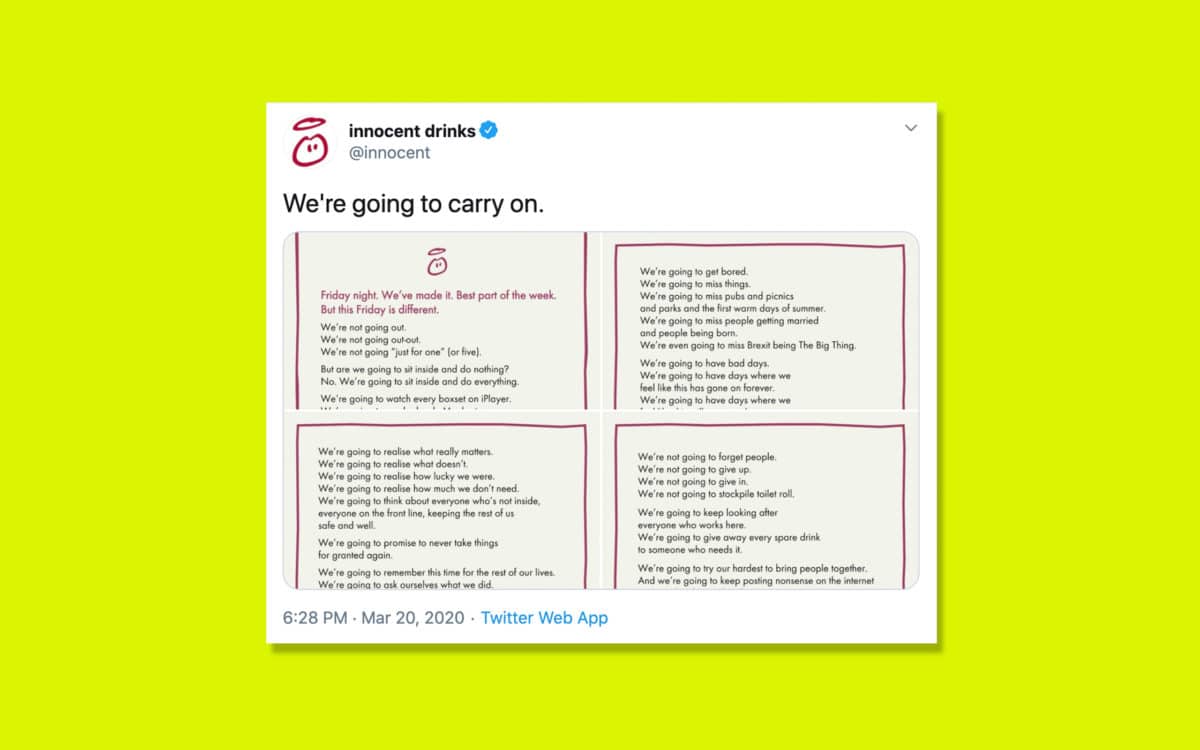
The messaging is a far cry from the usually comedic posts that Innocent uses on Twitter.
However, it highlights another crucial part of the company’s brand identity: their empathy and respect for their customers. The messaging is positive, and even lighthearted enough to make you smile.
So, how can you take a leaf out of Innocent’s book?
Know your brand:
Think about what you stand for as a company.
Which parts of your brand can you focus on to make your business seem as human-centric as possible? How can you highlight how much you care about your customers, without making light of the situation?
If you’re usually a playful company, can you still let that part of your attitude shine through in a sensitive way.
Check out Firebox’s fun strategy for instance, they deliver crucial information, without risking “joking” about COVID-19:
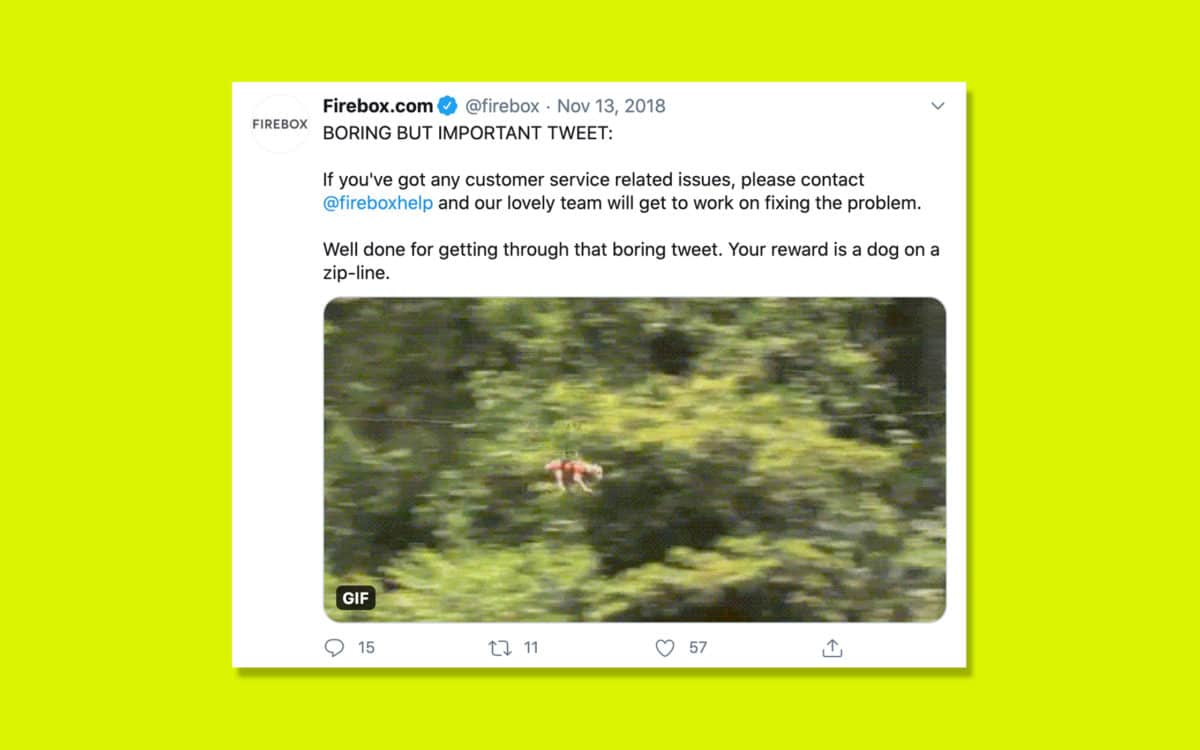
Listen to what’s happening
You need to keep up with the latest information about the current event that you’re dealing with. The more you know about what’s happening, the easier it’s going to be to avoid making any mistakes with your brand messaging strategy.
Check the news, listen to your customers on social media, and make sure that you pay attention to what your competitors are doing too. If you notice that a particular message from another company like yours is being received poorly, you can take a different approach.
Act quickly and thoughtfully, but remember your brand
KFC is known for playing around with a few puns from time to time. It’s probably no big surprise that they put that part of their personality into their announcement for UK and Ireland restaurants here.
The message includes all of the valuable information that customers need, while still allowing for a little bit of fun.
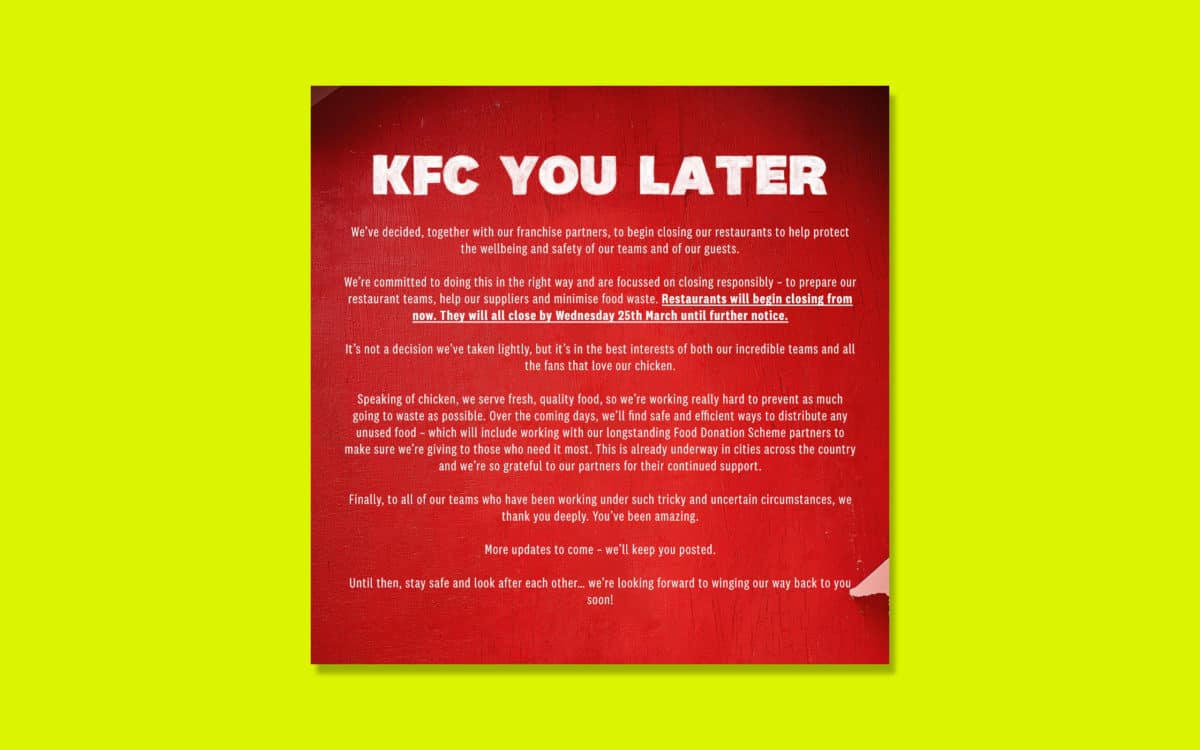
Phrases like “KFC you later”, and “winging our way back,” remind you of exactly which brand you’re dealing with, while being careful not to do anything that might upset a very sensitive customer base.
This is the time to treat your customers with kid gloves.
Deliver information that’s accurate and reliable
Whatever you do, don’t start copying messages from other brands without doing your research. The last thing you want is to be seen as a fear-mongering brand during these dangerous times. Anything you do say about the crisis should be well-researched and accurate.
Don’t make light of the situation. There’s nothing funny about it, so it’s important to remain sensitive.
For instance, Coors had plans to run an ad for being the best “work from home” beer, but the company decided to scrap the plans when businesses began using remote working as a way to reduce the spread of the virus.
Focus on the right kinds of brand messaging
This is a difficult time for everyone. When planning on how to use your tone of voice in communication, it’s essential to ensure that you’re saying the right things to your customers.
Remember, your clients might have a lot of questions so that FAQ announcements may be useful. It might also be necessary to remind customers of how they can get in touch with you if they have any issues.
In between informative updates don’t be afraid to share posts on social media, and on your website, that might help to distract your customers from the panic they feel. Brightening up a twitter feed with something lighthearted could help your customers to feel closer to you.
For example, Wendy’s decided to open its own Animal Crossing island to take people’s minds off the COVID-19 pandemic.
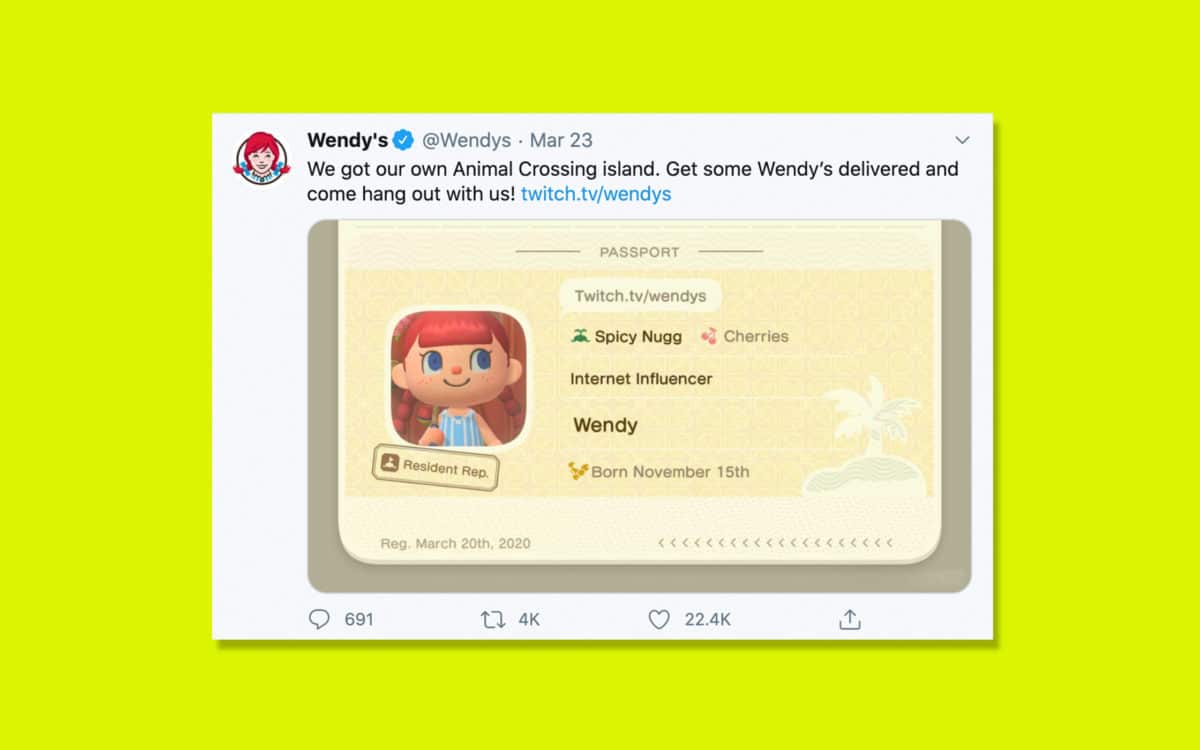
Examples of tone of voice in communication crises
Maintaining the right tone of voice in a crisis can be difficult.
For better or worse, brands and marketers generally do feel a need to weigh in on tragedies, whether it’s a public issue, a natural disaster, or some other upheaval. Unfortunately, it’s often easy to see moments like these as just another opportunity to take advantage of a trend.
Because of this, business leaders can frequently jump into their brand messaging strategy without thinking. You might decide that, since your customers are stuck at home browsing on their computers, now is the perfect time to launch a new sales strategy or highlight a new product.
However, the truth is that most customers won’t want to be sold at right now.
Your customers don’t know how they’re going to manage their finances during this difficult time. Because of that, they’re looking for messaging that shows how you’re going to help them.
For instance, Rent the Runway sent an email to customers letting them know that the virus can’t be transmitted through clothing and fabric:
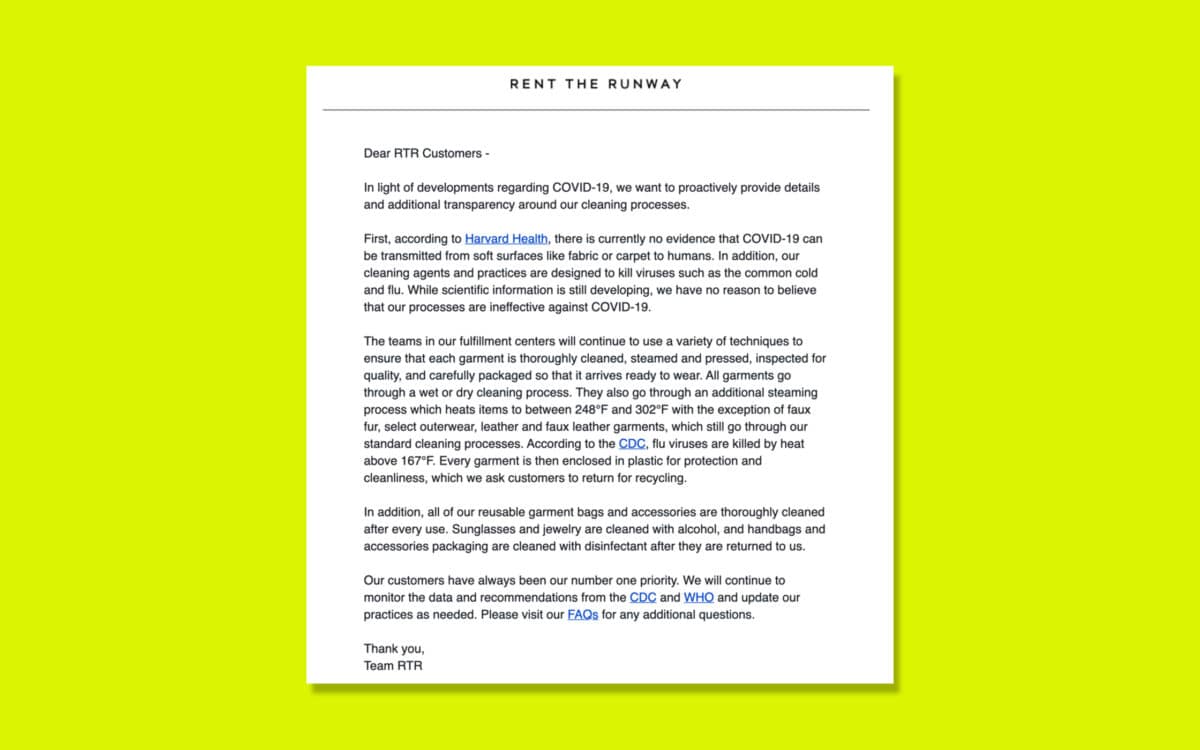
Since customers of the brand regularly hire and borrow clothes, they’re likely to be worried about the safety of the items they receive. This email doesn’t concentrate on getting customers to buy anything or making light of COVID-19. The brand message is all about delivering useful information.
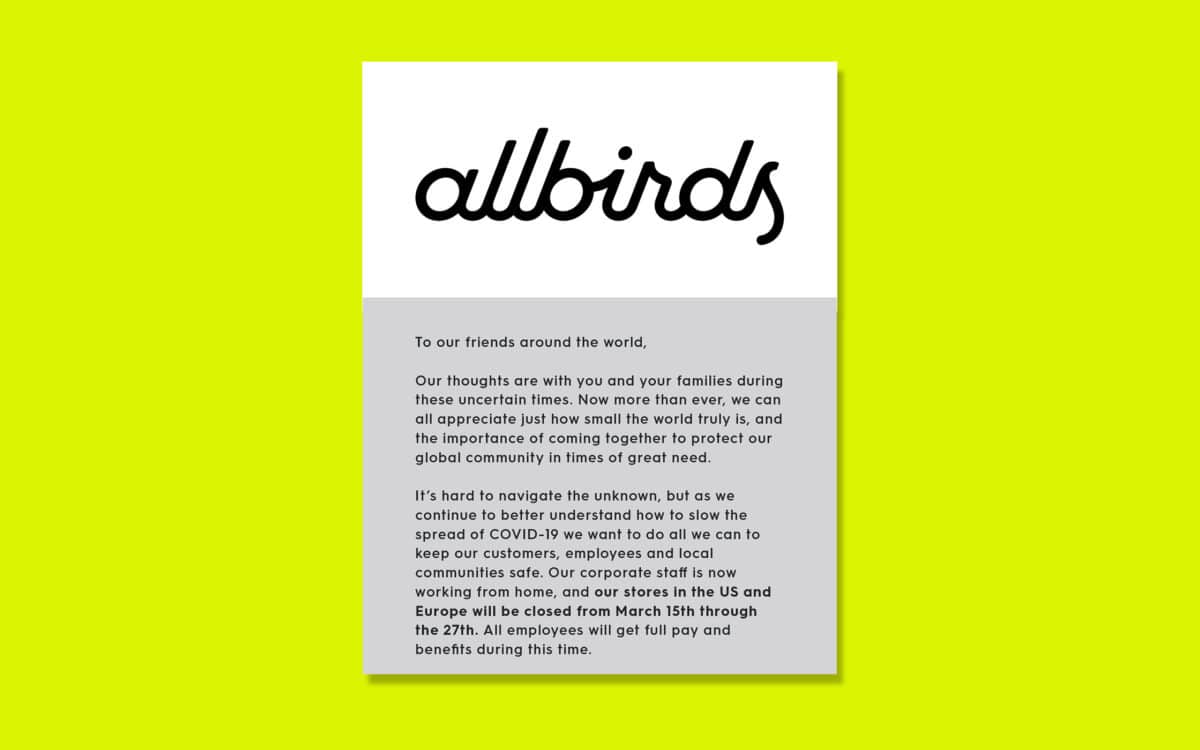
All Birds used a caring and empathetic tone of voice in its brand messaging strategy to let customers know that although their locations would be shutting (temporarily), staff would still be taken care of.
These examples of excellent tone of voice in communication remind us that during times of crisis, information and education are more important than sales. At the same time, if you can spread a little joy with your brand message, then you could see some serious benefits too.
This message from Host strikes an excellent balance between compassion and lightheartedness:
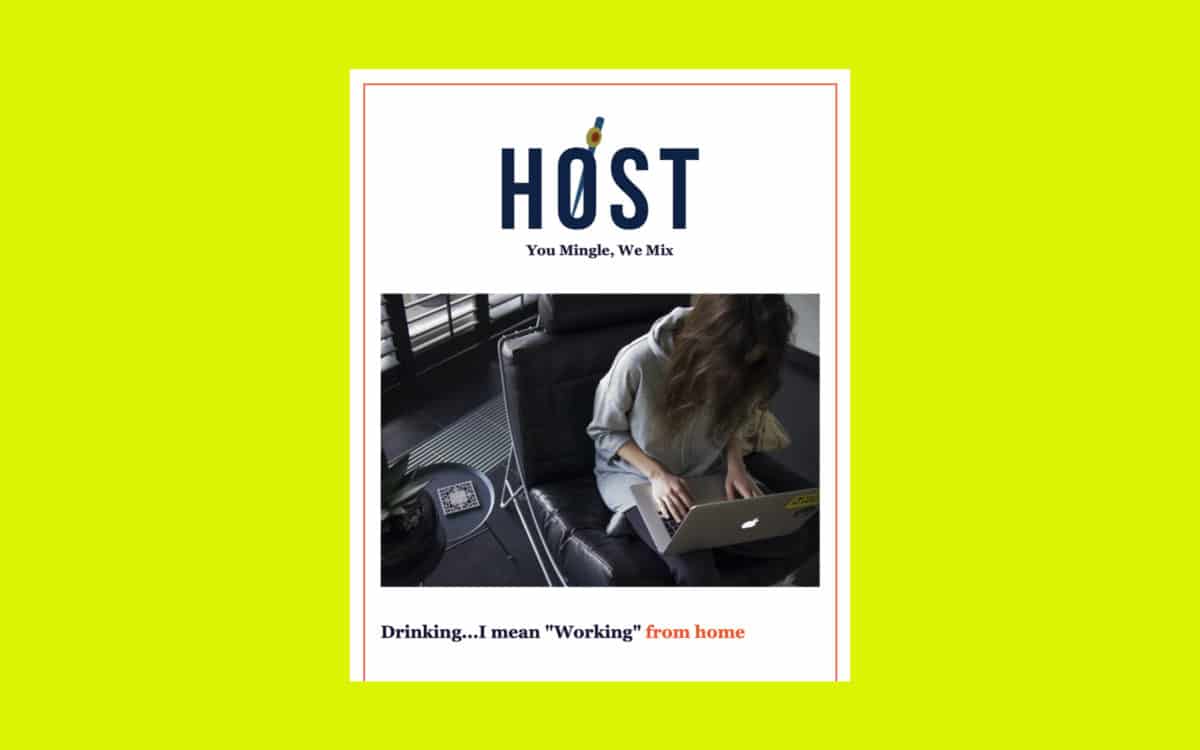
If you’re really stuck during a crisis, and you’re not sure how to communicate the right tone of voice to your customers, you can always try talking to them.
No-one is going to be able to give you all of the answers about how you should be building your brand messaging strategy right now. However, you can get a better feel of what your clients expect from you by sending an email out and requesting some feedback.
This email from Reformation asks what customers most want to hear about:
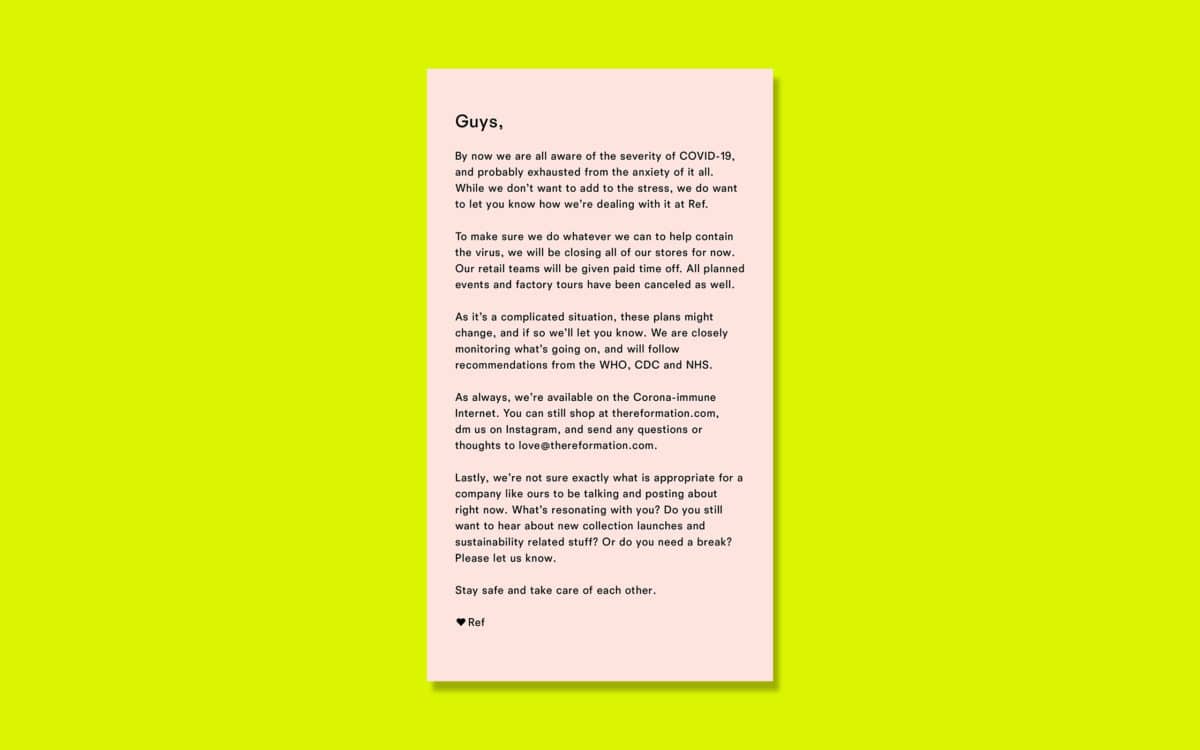
Need help with your brand message?
Ultimately, there’s no one-size-fits-all way to transform your tone of voice in a crisis.
On the one hand, your customers will expect you to continue showcasing the unique personality that they’ve come to love in your brand. On the other hand, you’ll need to ensure that your attitude doesn’t make it seem as though you don’t care about your customers or their wellbeing.
Our advice is to start by looking at your competition and taking a leaf out of their book. What’s working for them? How are your clients resonating with the messaging that they see elsewhere?
You can even ask your customers what they expect to see from your brand messaging strategy right now if you’re unsure.
At the same time, try not to rely too heavily on repurposing the strategies that other companies are using. You still need to be authentic, engaging, and relevant based on what you know about your target audience and the image that you’re trying to convey with your brand.
The best thing that you can do right now is be careful. Read through any messages that you’re sending a few times before you hit publish, and make sure you’re not missing anything insensitive.
Once the messages are out there, track the responses that your customers have to them, so you know more about how to proceed.
Need more help with managing your tone of voice in communication both inside and outside of a crisis? Contact the team at Fabrik today.
Fabrik Brands: Creative Industry











